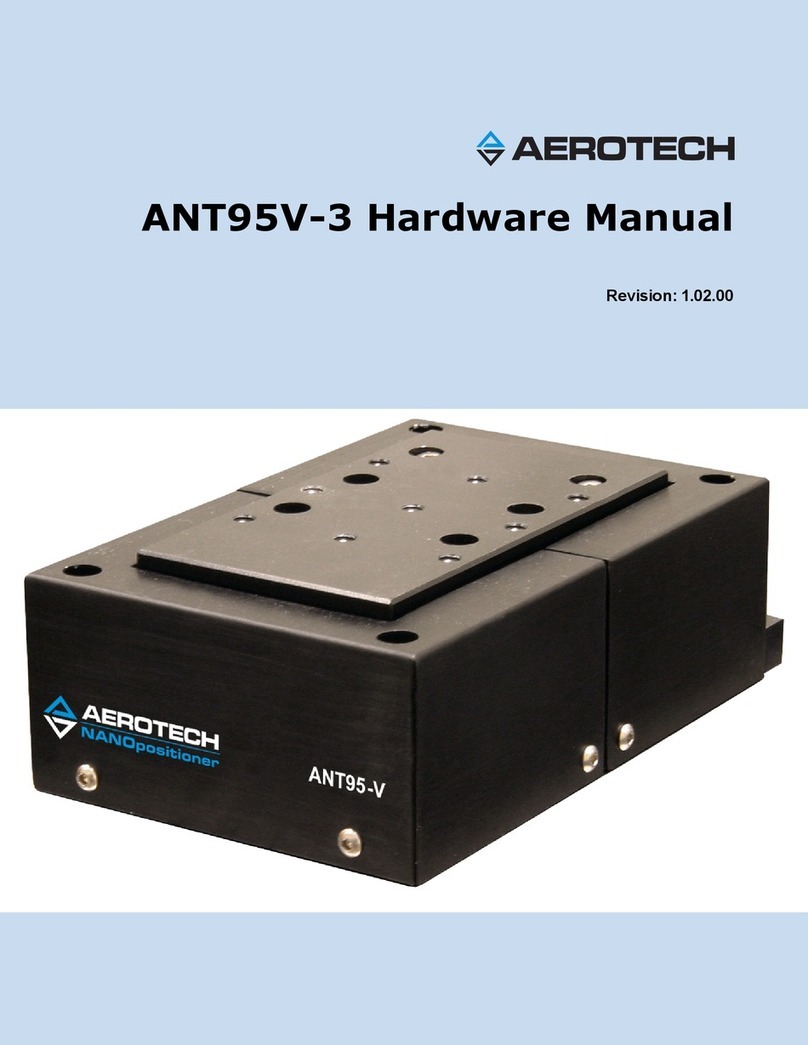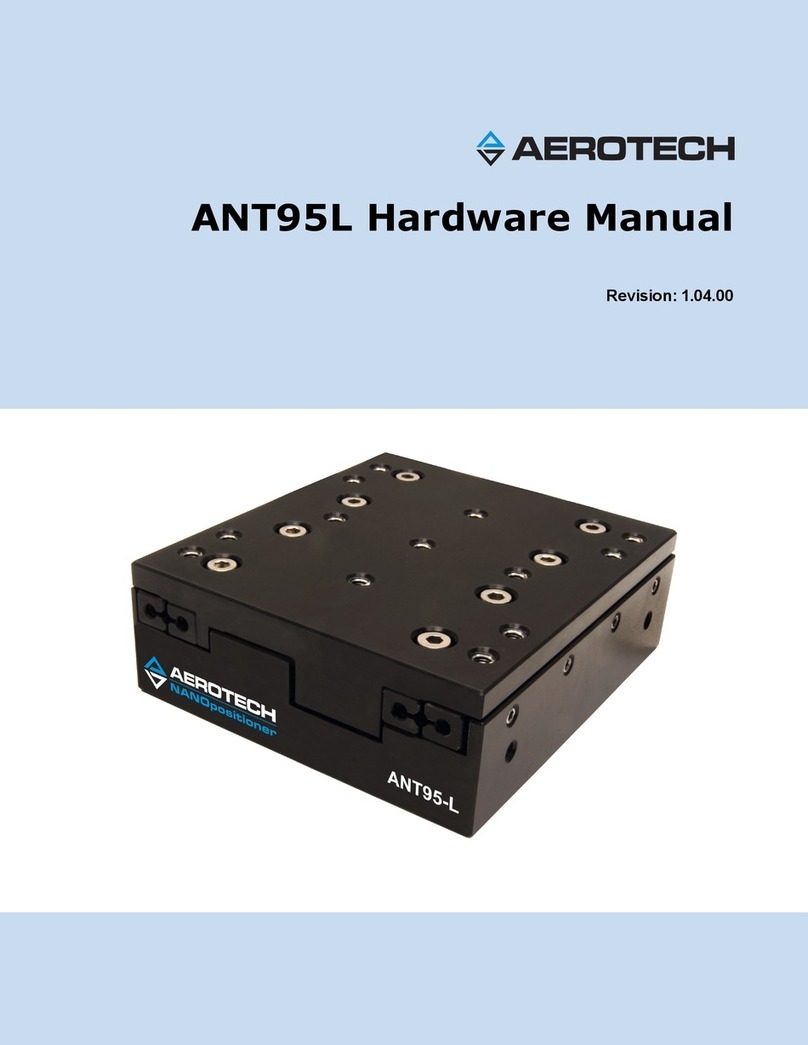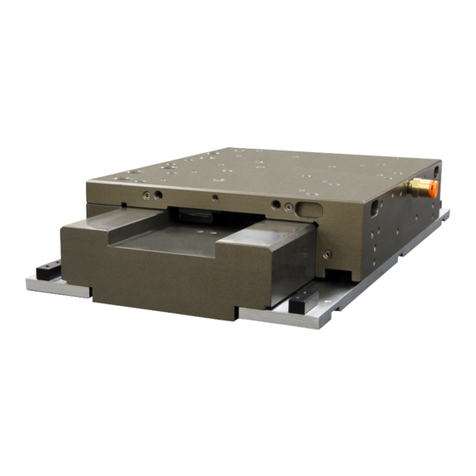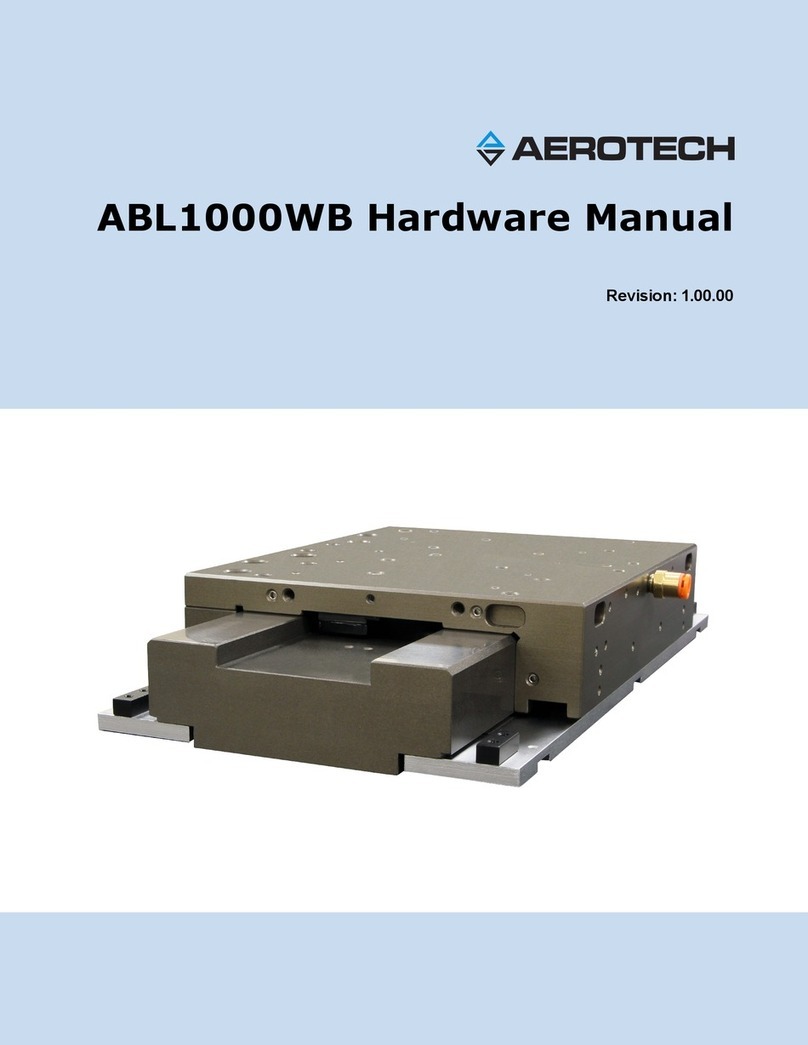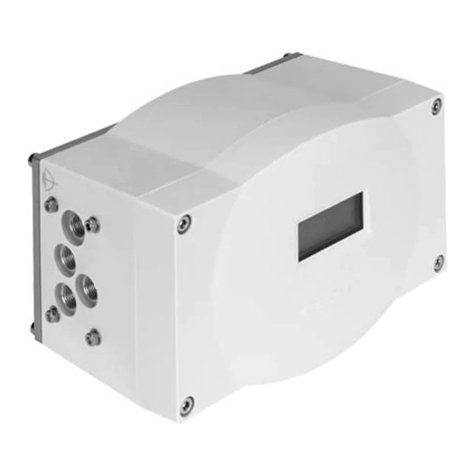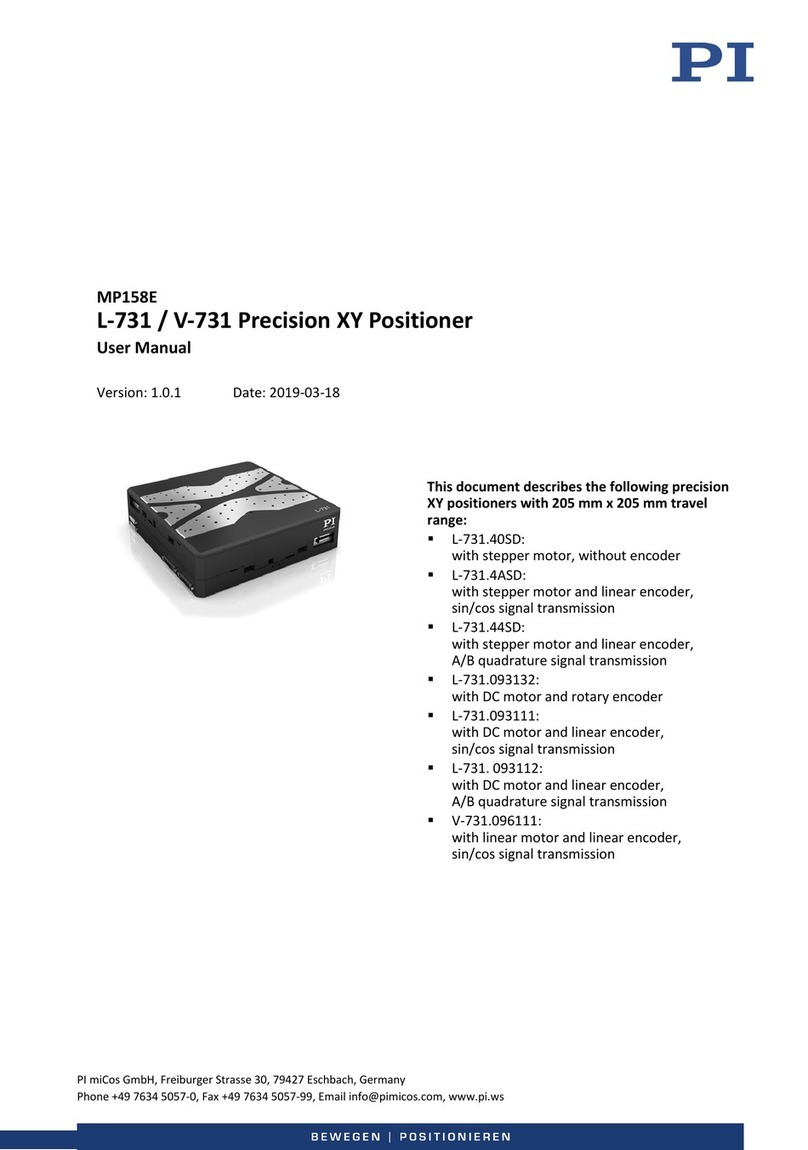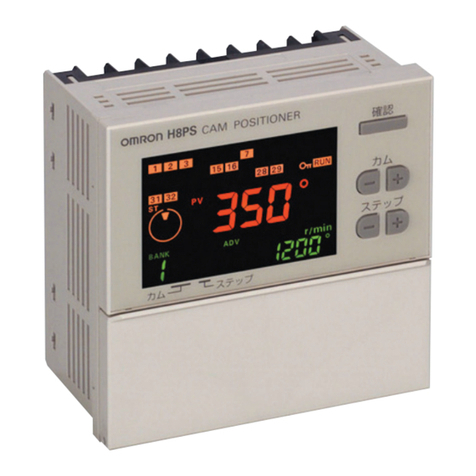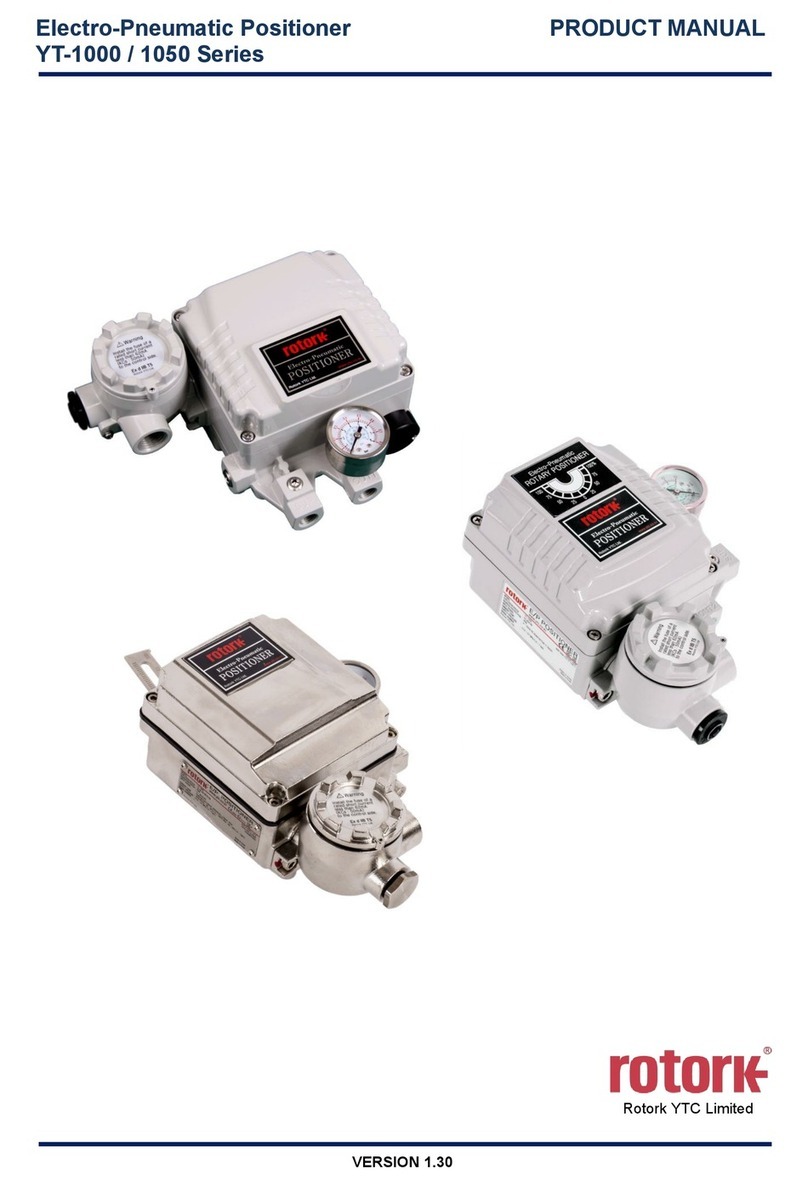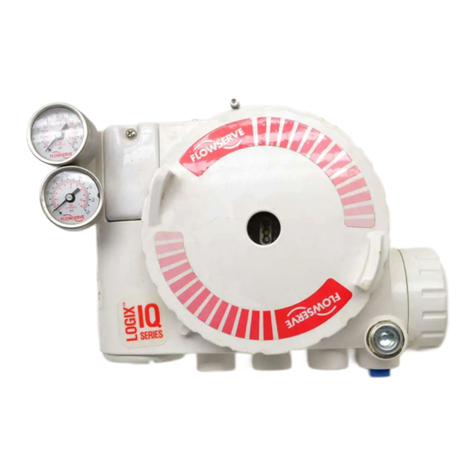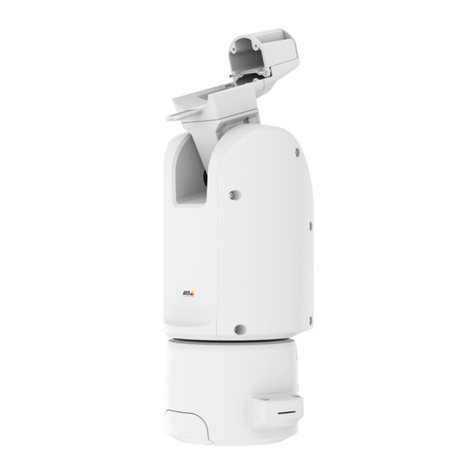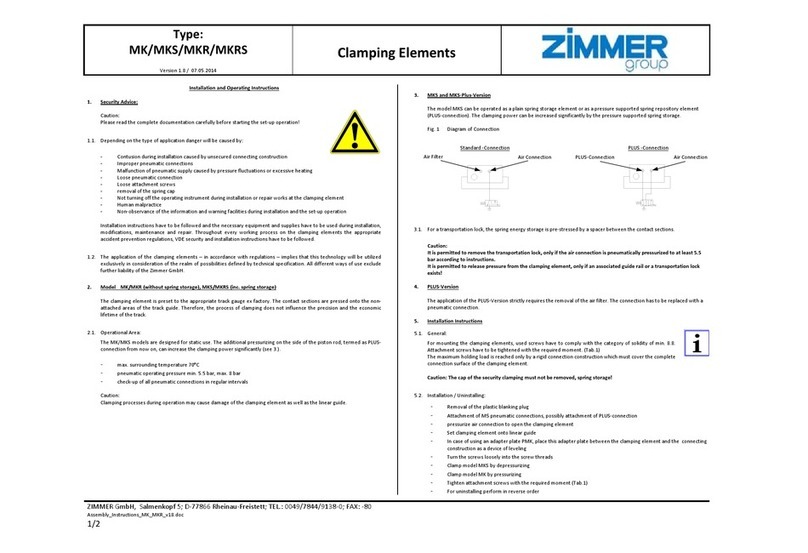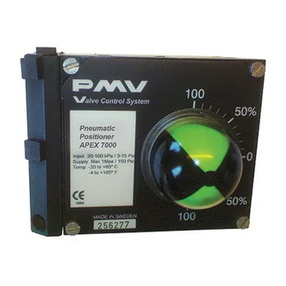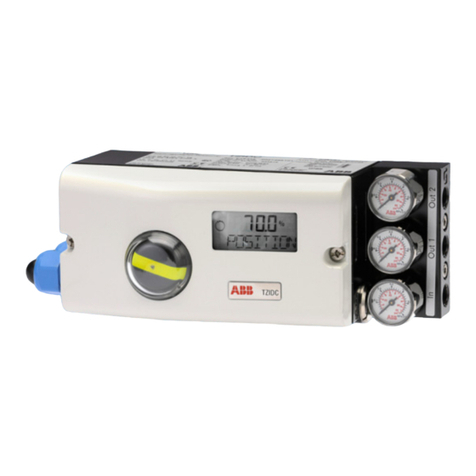Aerotech ANT95L Series User manual

Revision 2.00
ANT95L Series Single-Axis Linear Direct-Drive
Nanopositioning Stage
HARDWAREMANUAL

GLOBALTECHNICALSUPPORT
Go to the Global Technical Support Portal for information and support about your
Aerotech, Inc. products. The website supplies software, product manuals, Help files,
training schedules, and PC-to-PC remote technical support. If necessary, you can
complete Product Return (RMA) forms and get information about repairs and spare
or replacement parts. To get help immediately, contact a service office or your sales
representative. Include your customer order number in your email or have it
available before you call.
This manual contains proprietary information and may not be reproduced,
disclosed, or used in whole or in part without the express written permission of
Aerotech, Inc. Product names mentioned herein are used for identification purposes
only and may be trademarks of their respective companies.
Copyright © 2009-2021, Aerotech, Inc., All rights reserved.

Table of Contents
ANT95L Series Single-Axis Linear Direct-Drive Nanopositioning Stage 1
Table of Contents 3
List of Figures 4
List of Tables 5
Safety Procedures and Warnings 7
EU Declaration of Incorporation 9
Chapter 1: Overview 11
1.1. Environmental Specifications 12
1.2. Accuracy and Temperature Effects 12
1.3. Basic Specifications 13
1.4. Vacuum Operation 14
Chapter 2: Installation 15
2.1. Unpacking and Handling the Stage 15
2.2. Dimensions 16
2.3. Securing the Stage to the Mounting Surface 20
2.4. Attaching the Payload to the Stage 22
Chapter 3: Electrical Installation 25
3.1. Motor and Feedback Connectors 26
3.2. Motor and Feedback Wiring 28
3.3. Motor and Feedback Specifications 29
3.4. Limits, Marker, and Machine Direction 31
3.5. Motor and Feedback Phasing 32
Chapter 4: Maintenance 35
4.1. Service and Inspection Schedule 35
4.2. Cleaning and Lubrication 36
4.3. Troubleshooting 38
Appendix A: Warranty and Field Service 39
Appendix B: Revision History 41
Index 43
ANT95L Hardware Manual Table of Contents
www.aerotech.com 3

List of Figures
Figure 1-1: GEN2 vs GEN1 Visual Comparison 11
Figure 2-1: Shipping Brackets 15
Figure 2-2: ANT95L-025 Dimensions 16
Figure 2-3: ANT95L-025 Mounting Plate Dimensions 16
Figure 2-4: ANT95L-050 Dimensions 17
Figure 2-5: ANT95L-050 Mounting Plate Dimensions 17
Figure 2-6: ANT95L-075 Dimensions 18
Figure 2-7: ANT95L-075 Mounting Plate Dimensions 18
Figure 2-8: ANT95L-100 Dimensions 19
Figure 2-9: ANT95L-100 Mounting Plate Dimensions 19
Figure 2-10: Mounting Hole Pattern 21
Figure 2-11: Load Orientations 23
Figure 2-12: Cantilevered Load Capabilities 23
Figure 3-1: ANT95LMotor and Feedback Wiring 28
Figure 3-2: Machine Direction 31
Figure 3-3: Hall Phasing Diagram 32
Figure 3-4: Encoder Phasing Reference Diagram (Standard/Square Wave) 33
Figure 3-5: Encoder Phasing Reference Diagram (Analog/Sine Wave) 33
List of Figures ANT95L Hardware Manual
4 www.aerotech.com

List of Tables
Table 1-1: Model Numbers and Ordering Options 11
Table 1-2: Environmental Specifications 12
Table 1-3: ANT95L Series Specifications 13
Table 2-1: Stage Mounting Surface Flatness Requirement 20
Table 2-2: Stage to Mounting Surface Hardware 20
Table 2-3: Payload to Stage Surface Hardware 22
Table 3-1: 25-Pin Motor and Feedback Connector Pinout 27
Table 3-2: 25-Pin Mating Connector Part Numbers 27
Table 3-3: Hall-Effect Sensor Specifications 29
Table 3-4: Thermistor Specifications 29
Table 3-5: Encoder Specifications 29
Table 3-6: Limit Switch Specifications 29
Table 3-7: ANT95L Motor Specifications 30
Table 3-8: Encoder Resolution 30
ANT95L Hardware Manual List of Tables
www.aerotech.com 5

This page intentionally left blank.
List of Tables ANT95L Hardware Manual
6 www.aerotech.com

Safety Procedures and Warnings
IMPORTANT: This manual tells you how to carefully and correctly use and operate the
stage.
lRead all parts of this manual before you install or operate the stage or before you do
maintenance to your system.
lTo prevent injury to you and damage to the equipment, obey the precautions in this
manual.
lAll specifications and illustrations are for reference only and were complete and
accurate as of the release of this manual. To find the newest information about this
product, refer to www.aerotech.com.
If you do not understand the information in this manual, contact Aerotech Global
Technical Support.
IMPORTANT: This product has been designed for light industrial manufacturing or
laboratory environments. If the product is used in a manner not specified by the
manufacturer:
lThe protection provided by the equipment could be impaired.
lThe life expectancy of the product could be decreased.
DANGER: To decrease the risk of electrical shock, injury, death, and damage to the
equipment, obey the precautions that follow.
lRestrict access to the stage when it is connected to a power source.
lDo not connect or disconnect electrical components, wires, and cables while this
product is connected to a power source.
lBefore you do maintenance to the equipment, disconnect the electrical power.
lUncouple or otherwise prevent motor-coupled machinery movement when you do
service to the equipment.
lMake sure that all components are grounded correctly and that they obey the local
electrical safety requirements.
lThe drive must contain a properly-sized fuse, matched to the motor cable wire size.
lSupply each operator with the necessary protection from live electrical circuits.
DANGER: Hot surfaces. The case temperature could exceed 70°C.
lDo not touch the motor while it is in operation.
lWait until the motor has cooled before you touch it.
DANGER: The motor is not rated for use in explosive atmospheres. Do not operate the
motor in the presence of potentially explosive mixtures of air-borne dust or
combustible vapors.
IMPORTANT: Equipment grounds must be in place and maintained to reduce the risk
of serious or potentially fatal injury from electric shock.
ANT95L Hardware Manual Safety Procedures and Warnings
www.aerotech.com 7

DANGER: Strong Magnets / Electromagnetic Fields
lMotors and their associated drive, cables, and components are sources of elec-
tromagnetic fields. Persons with implanted medical devices need to evaluate the
risks associated with these devices before they can enter an area where the devices
are in use.
lStrong rare-earth magnets are present in the motor. Interaction with metallic objects
(tools, watches, or keys, for example) could produce pinch injuries or damage to the
equipment.
lUse non-magnetic tools when you do service to the motor.
DANGER: System travel can cause crush, shear, or pinch injuries. Restrict access to all
motor and stage parts while your system is connected to a power source.
lDo not put yourself in the travel path of machinery.
lMotors are capable of very high speeds and acceleration rates.
WARNING: To decrease the risk of damage to the equipment, you must obey the
precautions that follow
lOnly trained operators should operate this equipment.
lAll service and maintenance must be done by approved personnel.
lUse this product only in environments and operating conditions that are approved in
this manual.
lNever install or operate equipment that appears to be damaged.
lMake sure that the product is securely mounted before you operate it.
lUse care when you move the ANT95L or you could negatively affect the performance
of it.
WARNING: Securely mount and position all system cables.
Safety Procedures and Warnings ANT95L Hardware Manual
8 www.aerotech.com

EU Declaration of Incorporation
Manufacturer Aerotech, Inc.
101 Zeta Drive
Pittsburgh, PA 15238-2811
USA
herewith declares that the product:
ANT95L Linear Stage
is intended to be incorporated into machinery to constitute machinery covered by the Directive 2006/42/EC
as amended;
and that the following harmonized European standards have been applied:
EN ISO 12100:2010
Safety of machinery - Basic concepts, general principles for design
EN 60204-1:2010
Safety of machinery - Electrical equipment of machines - Part 1:General
requirements
and further more declares that
it is not allowed to put the equipment into service until the machinery into which it is to
be incorporated or of which it is to be a component has been found and declared to
be in conformity with the provisions of the Directive 2006/42/EC and with national
implementing legislation, for example, as a whole, including the equipment referred
to in this Declaration.
This is to certify that the aforementioned product is in accordance with the applicable requirements of the
following directive(s):
2011/65/EU RoHS 2 Directive
EU 2015/863 Amendment RoHS 3 Directive
Authorized
Representative / Simon Smith, European Director
Aerotech Ltd
The Old Brick Kiln, Ramsdell, Tadley
Hampshire RG26 5PR
UK
Engineer Verifying
Compliance / Alex Weibel
Aerotech, Inc.
101 Zeta Drive
Pittsburgh, PA 15238-2811
USA
Date 8/6/2021
ANT95L Hardware Manual EU Declaration of Incorporation
www.aerotech.com 9

This page intentionally left blank.
EU Declaration of Incorporation ANT95L Hardware Manual
10 www.aerotech.com

Chapter 1: Overview
The specifications in this manual pertain to the second generation of ANT95L stages. The ordering
options (Table 1-1) and basic specifications (Section 1.3.) have changed. The visual differences
between second and first generation stages:
lan updated Aerotech logo
la revised shipping clamp design
land the introduction of additive (3D-printed) parts.
Refer to Figure 1-1. Contact Aerotech if you need a first generation manual.
Figure 1-1: GEN2 vs GEN1 Visual Comparison
Table 1-1: Model Numbers and Ordering Options
ANT95L Single-Axis Linear Direct-Drive Nanopositioning Stage
Travel (Required)
-025 25 mm travel
-050 50 mm travel
-075 75 mm travel
-100 100 mm travel
Feedback (Required)
-E1 Incremental linear encoders, 1 Vpp amplified sine output
-E2 Incremental linear encoders, digital RS422 output, 5 nm electrical
resolution
-E4 Incremental linear encoders, 1 Vpp amplified sine output, high-
performance
Mounting Plate (Optional)
-MP Mounting plate
Performance Grade (Required)
-PL1 Base Performance
-PL2 High-accuracy performance
Integration (Required)
-TAS Test as system: Testing, integration, and documentation of a group of
components as a complete system that will be used together.
-TAC Test as components:Testing and integration of individual items as discrete
components that ship together.
ANT95L Hardware Manual Chapter 1: Overview
www.aerotech.com 11

1.1. Environmental Specifications
WARNING: Do not expose this product to environments or conditions outside of the
listed specifications. You could damage the equipment if you exceed the environmental
or operating specifications.
Table 1-2: Environmental Specifications
Ambient
Temperature
Operating: 10° to 35° C (50° to 95° F)
The optimal operating temperature is 20° C ±2° C (68° F ±4° F). If at any time the
operating temperature deviates from 20° C degradation in performance could
occur.
Storage: 0° to 40° C (32° to 104° F) in original shipping packaging
Humidity Operating: 20% to 60% RH
Storage: 10% to 70% RH, non-condensing in original packaging.
The stage should be packaged with desiccant if it is to be stored for an extended
time.
Altitude Operating: 0 m to 2,000 m (0 ft to 6,562 ft) above sea level
Contact Aerotech if your specific application involves use above 2,000 m or below
sea level.
Vibration Use the system in a low vibration environment. Excessive floor or acoustical
vibration can affect system performance. Contact Aerotech for information
regarding your specific application.
Protection
Rating
These stages are not suited for dusty or wet environments. This equates to an
ingress protection rating of IP00.
Use Indoor use only
1.2. Accuracy and Temperature Effects
Aerotech products are designed for and built in a 20°C (68°F) environment. Extreme temperature
changes could cause a decrease in performance or permanent damage to the stage. At a minimum,
the environmental temperature must be controlled to within 0.25ºC per 24 hours to ensure the stage
specifications are repeatable over an extended period of time. The severity of temperature effects
on all specifications depends on many different environmental conditions, which include how the
stage is mounted. Contact the factory for more details.
The thermal expansion coefficient of the encoder scale is 3.25 ppm/°C. Travel will increase or
decrease at this rate as the temperature of the encoder scale temperature deviates from 20°C (68°F).
The accuracy specification of stage is measured 25 mm above the table with the stage in an
unloaded condition. The stage is assumed to be fully supported by a mounting surface meeting or
exceeding the specification in Section 2.3.
1.1. Environmental Specifications ANT95L Hardware Manual
12 www.aerotech.com

1.3. Basic Specifications
Resolution is dependent on encoder resolution and controller interpolation.
Table 1-3: ANT95L Series Specifications
ANT95L-025 ANT95L-050 ANT95L-075 ANT95L-100
Travel 25 mm 50 mm 75 mm 100 mm
Accuracy(1)
-PL1 ± 2.5 µm ± 2.5 µm ± 4.0 µm ± 5.0 µm
-PL2 (-E1, -E2) ± 250 nm ± 250 nm ± 275 nm ± 275 nm
-PL2 (-E4) ± 175 nm ± 175 nm ± 200 nm ± 200 nm
Bidirectional Repeatability(1) ± 75 nm
Resolution (Minimum
Incremental Motion)
-E1 1 nm
-E4 0.5 nm
Straightness(1) ± 1.0 µm ± 1.0 µm ± 2.0 µm ± 2.5 µm
Flatness(1) ± 1.0 µm ± 1.0 µm ± 2.0 µm ± 2.5 µm
Pitch 10 arc sec
Roll 10 arc sec
Yaw 5 arc sec
Maximum Speed -E1, -E4 500 mm/s
-E2 145 mm/s
Maximum Acceleration (No Load) 5 g 4 g 3 g 3 g
In-Position Stability(2) -E1 <1 nm
-E4 <0.5 nm
Load Capacity(3) Horizontal 5 kg 7 kg 7 kg 7 kg
Side 5 kg
Moving Mass 0.45 kg 0.63 kg 0.74 kg 0.95 kg
Stage Mass 0.96 kg 1.36 kg 1.59 kg 2.03 kg
Material Anodized Aluminum
Mean Time Between Failure 30,000 Hours
1. Certified with each stage.
2. In-position stability is reported as 3-sigma value (requires a 1 Vpp encoder).
3. Payload specifications assume that the payload is centered on-axis.
4. Specifications are for single-axis systems measured 25 mm above the tabletop; performance of multi-axis system
depend upon the payload and workpoint. Consult the Aerotech factory for multi-axis or non-standard applications.
5. -PL2 performance requires the use of an Aerotech controller.
6. To ensure the achievement and repeatability of specifications over an extended period of time, environmental
temperature must be controlled to within 0.25°C per 24 hours. Consult the Aerotech factory for more information.
ANT95L Hardware Manual 1.3. Basic Specifications
www.aerotech.com 13

1.4. Vacuum Operation
There are two vacuum preparation options:
lLow Vacuum (for use in atmospheric pressures to 10-3 Torr)
lHigh Vacuum (preparation for environments from 10-3 to 10-6 Torr).
Special preparations include:
lParts are lubricated with vacuum-compatible lubricants.
lMaterials, fasteners, and coatings with vacuum outgas performance are ensured to be compatible
with the specified level of vacuum.
lFor high vacuum systems, situations that may allow gases to become temporarily trapped during
pump down are removed.
lPrior to assembly, stage parts are thoroughly cleaned in a clean environment.
lThe stage is packaged in a special polyethylene bag.
Vacuum Guidelines
To ensure that the stage will continue to perform well in the vacuum environment, follow the
guidelines listed below (in addition to standard handling, installation, and lubrication guidelines
outlined in this manual).
1. Do not remove the stage from its sealed bag until it is ready for use.
2. Always handle the stage in a clean environment and use powder-free polyethylene gloves to pre-
vent any contaminants from adhering to the surface of the stage.
3. During installation, use cleaned, vented, stainless steel fasteners to secure the stage.
4. Reduced air pressure eliminates significant convective heat transfer. This, coupled with the vis-
cous vacuum-compatible lubricants, could result in excessive motor operating temperatures.
Because of this, consider all continuous torque ratings to be 40 to 60% lower than the value spe-
cified for operation in normal atmospheric environment. Reduce motor usage accordingly.
5. We recommend that you use a small quantity of Braycote® 602EF grease or a compatible sub-
stitute of equal quality lubricant in vacuum applications.
6. Bake vacuum components at 60 °C for 24 to 48 hours to significantly reduce outgassing at initial
pump-down to vacuum pressure and evaporate water vapor that impregnates porous surfaces
on the aluminum and Teflon cables. Aerotech recommends that customers bake out vacuum sys-
tems when first installing them in the vacuum chamber. Contact Aerotech to discuss your applic-
ation and the recommended bakeout procedure.
1.4. Vacuum Operation ANT95L Hardware Manual
14 www.aerotech.com

Chapter 2: Installation
WARNING: The stage installation must be in accordance with the instructions provided
by this manual and any accompanying documentation. Failure to follow these
instructions could result in injury or damage to the equipment.
2.1. Unpacking and Handling the Stage
WARNING: It is the responsibility of the customer to safely and carefully lift and move
the ANT95L.
lRefer to Section 1.3. for stage mass specifications.
lUse care when you move the ANT95L or you could negatively affect the performance
of it.
lLift this product only by the base.
lFor multi-axis assemblies, always lift the system by the lower axis.
lDo not use the cables or the connectors to lift or move this product.
lMake sure that all moving parts are secure before you move the stage. Unsecured
moving parts could shift and cause injury or damage to the equipment.
Carefully remove the stagefrom its protective shipping container. Gently set the stage on a smooth,
flat, and clean surface. Use compressed nitrogen or clean, dry, oil-free air to remove any dust or
debris that has collected during shipping.
Before you operate the stage, let it stabilize at room temperature for at least 12 hours. This will
ensure that all of the alignments, preloads, and tolerances are the same as they were when they
were tested at Aerotech.
Each stage has a label listing the system part number and serial number. These numbers contain
information necessary for maintenance or system hardware and software updates. Locate this label
and record the information for later reference.
Red, anodized aluminum shipping brackets have been installed to prevent unwanted motion
damage that could occur during shipment. The brackets must be removed before the ANT95L can be
operated. Retain the brackets and hardware for future use.
Figure 2-1: Shipping Brackets
ANT95L Hardware Manual Chapter 2: Installation
www.aerotech.com 15

2.2. Dimensions
Figure 2-2: ANT95L-025 Dimensions
Figure 2-3: ANT95L-025 Mounting Plate Dimensions
2.2. Dimensions ANT95L Hardware Manual
16 www.aerotech.com

Figure 2-4: ANT95L-050 Dimensions
Figure 2-5: ANT95L-050 Mounting Plate Dimensions
ANT95L Hardware Manual 2.2. Dimensions
www.aerotech.com 17

Figure 2-6: ANT95L-075 Dimensions
Figure 2-7: ANT95L-075 Mounting Plate Dimensions
2.2. Dimensions ANT95L Hardware Manual
18 www.aerotech.com

Figure 2-8: ANT95L-100 Dimensions
Figure 2-9: ANT95L-100 Mounting Plate Dimensions
ANT95L Hardware Manual 2.2. Dimensions
www.aerotech.com 19

2.3. Securing the Stage to the Mounting Surface
WARNING: The stage must be mounted securely. Improper mounting can result in
injury and damage to the equipment.
DANGER:PINCHPOINT! Keep Hands Clear while the stage is in motion. Make sure that
all moving parts are secure before you move the stage. Unsecured moving parts could
shift and cause injury or damage to the equipment.
The mounting surface must be flat and have adequate stiffness to achieve the maximum
performance from the stage. When it is mounted to a non-flat surface, the stage can be distorted
while the mounting screws are tightened. This distortion will decrease overall accuracy. Adjustments
to the mounting surface must be done before the stage is secured.
Inspect the mounting surface for dirt or unwanted residue and clean if necessary. Use precision
flatstones on the mounting surface to remove any burrs or high spots. Clean the mounting surface
with a lint-free cloth and acetone or isopropyl alcohol and allow the cleaning solvent to completely
dry. Gently place the stage on the mounting surface.
IMPORTANT: The stage is precision machined and verified for flatness prior to product
assembly at the factory. If machining is required to achieve the desired flatness, it
should be performed on the mounting surface rather than the stage. Shimming should
be avoided if possible. If shimming is required, it should be minimized to retain
maximum rigidity of the system.
Table 2-1: Stage Mounting Surface Flatness Requirement
Stage Travel Flatness Requirement
All Travels 1 µm per 50 mm
Access the mounting holes in the base of the stage by sliding the carriage all the way to either end of
travel (shown in Figure 2-10).
Four additional mounting holes in the base of the stage are also available for customer use (refer to
Section 2.2. for locations and Table 2-2 for mounting hardware information). For X-Y configurations,
mount the upper axis to the tabletop of the lower stage. A mounting plate is required if the upper
axis is an ANT95L-050.
Tightening torque values for the mounting hardware are dependent on the properties of the surface
to which the stage is being mounted. Values provided in Table 2-2 are typical values and may not be
accurate for your mounting surface. Refer to Section 2.2. for mounting locations and dimensions.
Table 2-2: Stage to Mounting Surface Hardware
Mounting Hardware Typical Screw Torque
M4 SHCS (stage mounting) 2.0 N·m [18 lb·in]
M5X0.8 (alternate mounting) 4.1 N·m [36 lb·in]
M6 or (1/4") SHCS ([-MP] option) 7.0 N·m [61 lb·in]
IMPORTANT: 75 mm and 100 mm travel stages are only available for lower axis (X-axis)
configurations.
2.3. Securing the Stage to the Mounting Surface ANT95L Hardware Manual
20 www.aerotech.com
Other manuals for ANT95L Series
1
This manual suits for next models
4
Table of contents
Other Aerotech Valve Positioner manuals
Popular Valve Positioner manuals by other brands

Parker
Parker 404 product manual
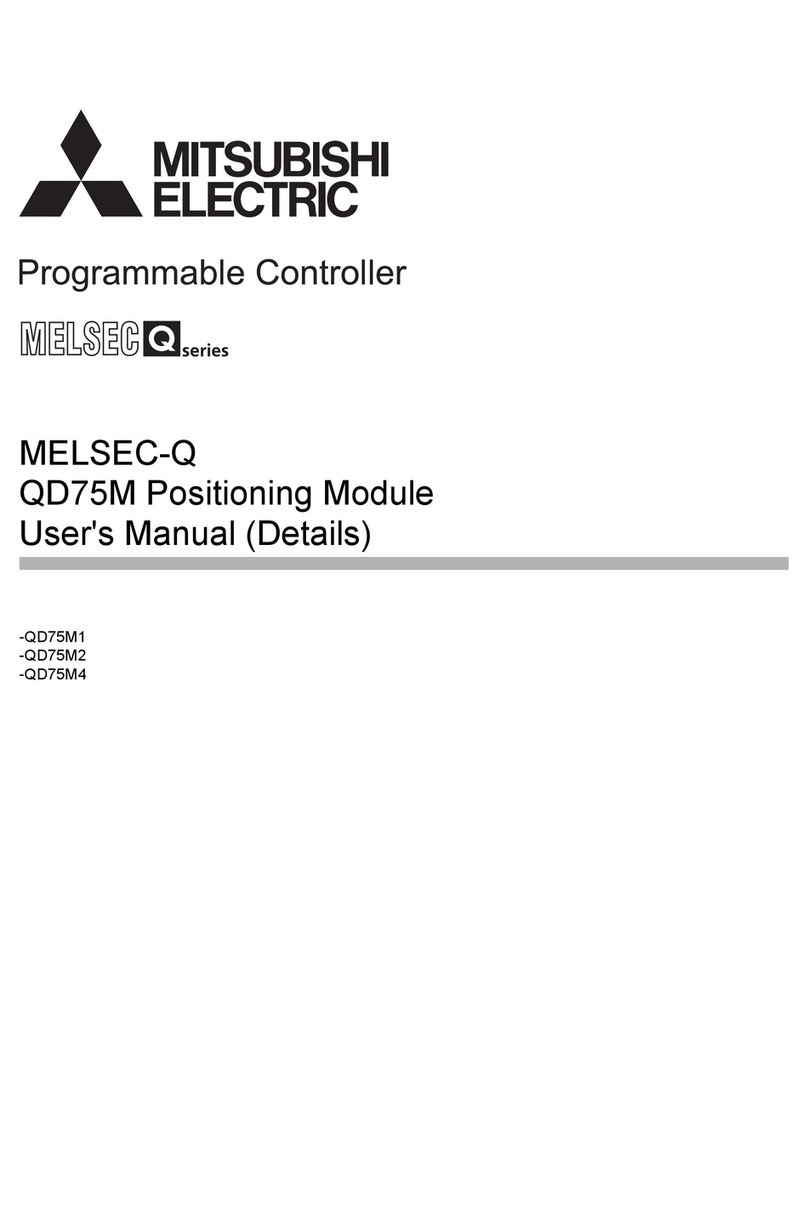
Mitsubishi Electric
Mitsubishi Electric MELSEC-Q QD75M user manual
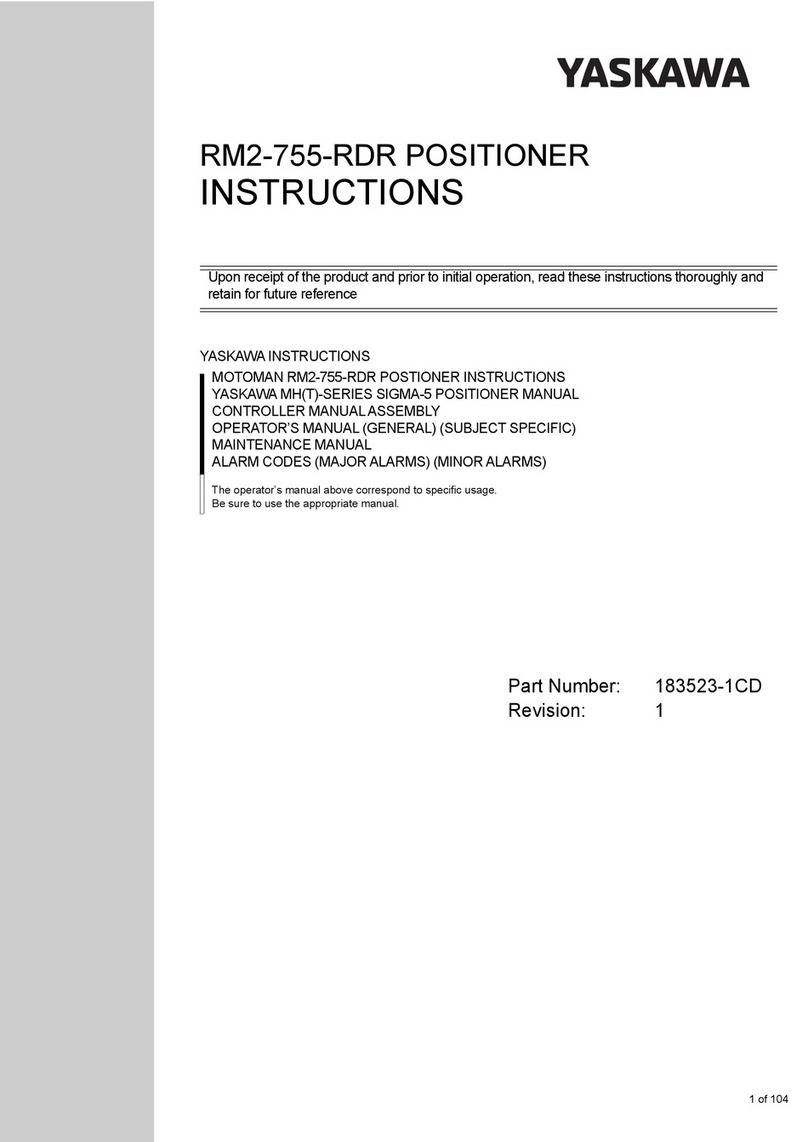
YASKAWA
YASKAWA RM2-755-RDR instructions
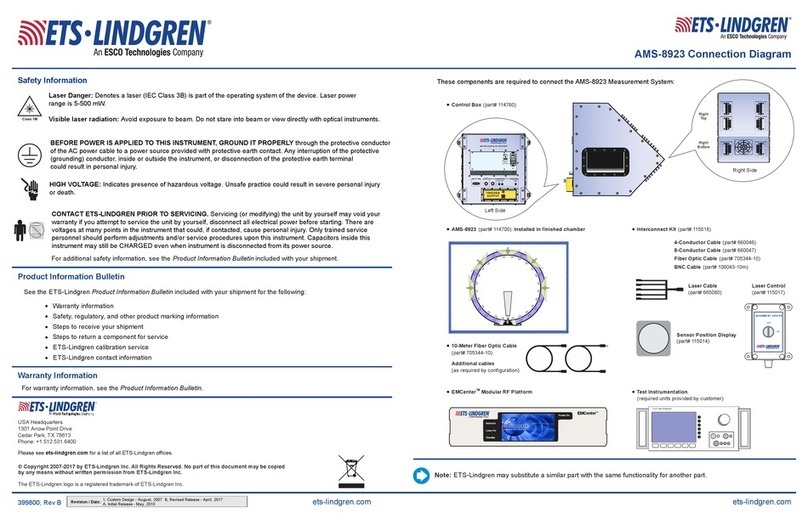
ESCO Technologies
ESCO Technologies ETS-LINDGREN AMS-8923 quick start guide

EBRO ARMATUREN
EBRO ARMATUREN EP100 Master Instruction

Burkert
Burkert 8635 Additional instructions

